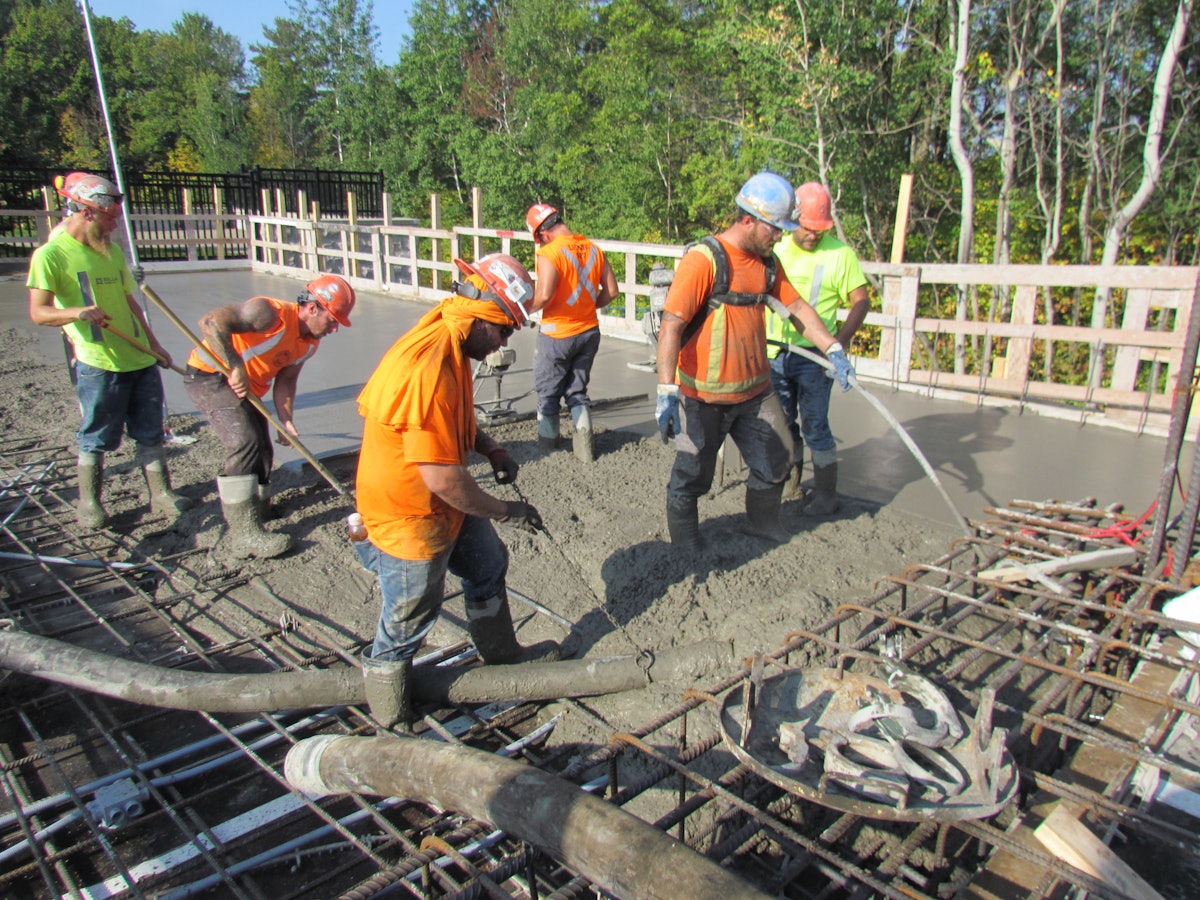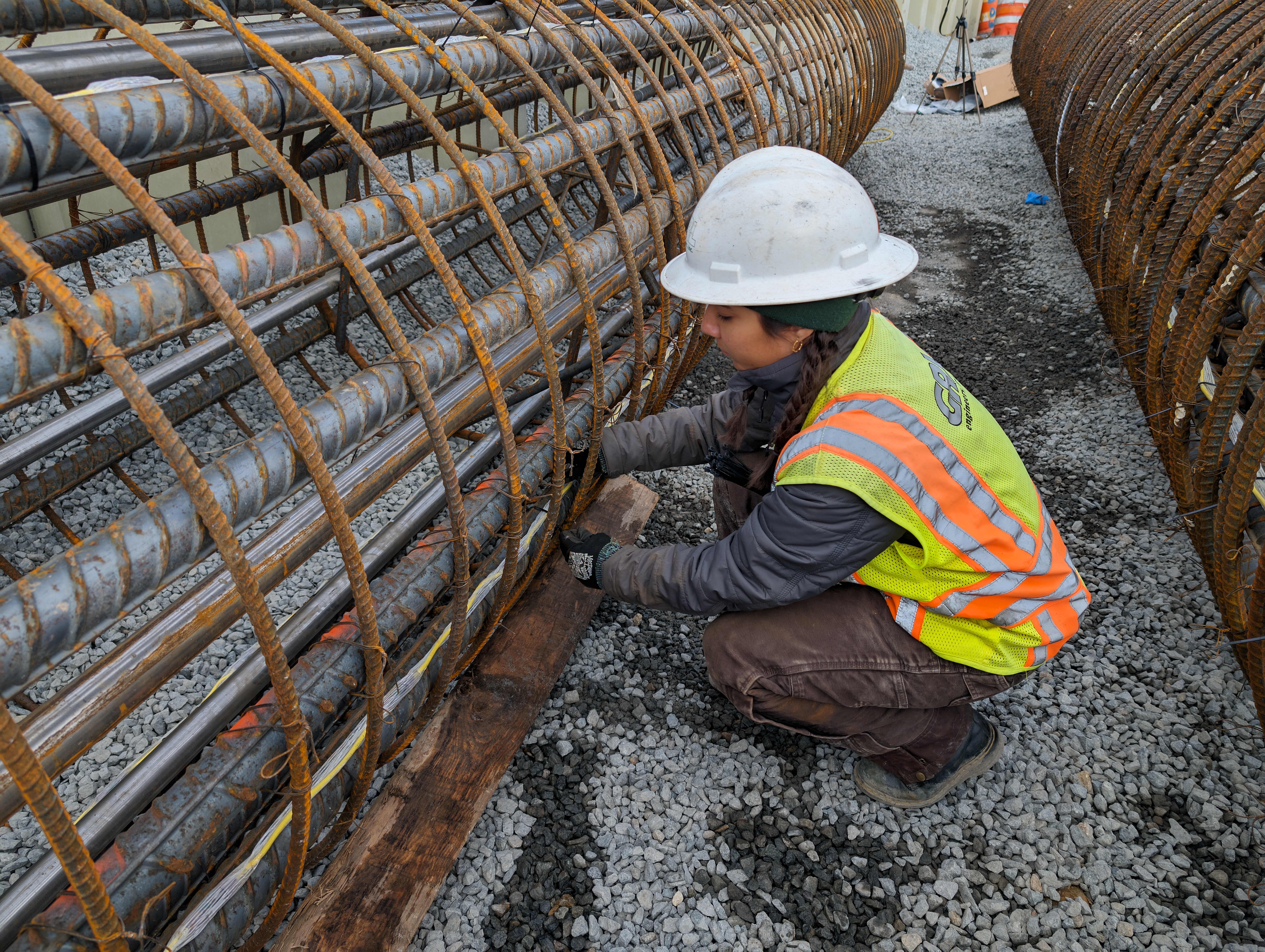The Essential Role of Concrete Structure in Structural Stability and Long Life
When it comes to constructing a property, the structure is much more essential than you might assume. Concrete foundations give unrivaled toughness and toughness, guaranteeing your framework can endure various environmental obstacles. Without a strong base, you risk possible issues like moving or fracturing, which can endanger safety and security and worth. Understanding the subtleties of concrete foundations could be the trick to maintaining your investment for years to come. So, what should you consider following?
Recognizing the Importance of Concrete Foundations
Concrete foundations are important to the total stability of any structure, as they supply the crucial assistance needed to endure various lots and environmental conditions. When you assume concerning developing a home or a business space, the foundation is the first point you must take into consideration. It serves as a barrier against dampness, shielding your building from water damage. A well-placed concrete structure also avoids settling and shifting, which can result in cracks in wall surfaces and floorings. You'll intend to assure that the foundation is appropriately made and enhanced, as this impacts the long life of your structure. Additionally, a strong foundation can enhance power efficiency by minimizing air leaks. Keep in mind, ignoring the importance of a concrete foundation can result in costly repair services down the line. Investing in a quality structure upfront is necessary for the honesty and longevity of your framework.
Benefits of Concrete Foundations for Architectural Integrity
While many factors add to a building's structural integrity, concrete structures offer unparalleled sturdiness and toughness. You'll appreciate that concrete can endure extreme climate condition, resisting both moisture and temperature variations. This durability implies your framework is less most likely to experience splitting or changing gradually, which can compromise its safety.Additionally, concrete's integral weight provides a solid base, stopping activity throughout all-natural events like earthquakes or floodings. When you choose a concrete foundation, you're likewise choosing reduced maintenance; unlike wood, it will not rot or draw in parasites, conserving you time and money in repairs.Moreover, concrete's fire resistance uses included safety, guaranteeing your framework can sustain heats without significant damage. In general, investing in a concrete foundation indicates you're focusing on the long-term stability and integrity of your structure, making it a sensible choice for any building task.
Usual Types of Concrete Foundations
When it concerns developing foundations, comprehending the typical kinds of concrete structures can assist you make educated choices for your project. One of the most prevalent kinds consist of slab-on-grade, crawl room, and complete cellar foundations.A slab-on-grade foundation is a straightforward, cost-efficient option, where a thick concrete slab is put directly on the ground. This kind functions well in cozy environments, as it decreases warm loss.Crawl room structures elevate the home slightly above ground, enabling air flow and access to pipes and electric systems. This layout can aid avoid moisture issues.Full basement structures provide extra living or storage area while giving excellent architectural assistance. They require even more excavation and are commonly made use of in chillier environments to stop frost heave.
Aspects to Think About When Designing a Concrete Foundation

Best Practices for Installing Concrete Foundations
When you're installing a concrete structure, appropriate site prep work is necessary to assure security (West Coast GE Concrete contractors). You'll likewise require to understand reinforcement techniques to enhance strength and resilience. Finally, do not ignore the curing procedure, as it plays a basic function in accomplishing a solid structure
Website Preparation Value
It might appear uncomplicated, proper site preparation is crucial for ensuring a strong and durable concrete structure. Start by clearing the area of any kind of particles, vegetation, or organic material that might compromise the foundation's honesty. Next, assess the soil type and compaction; you could need to excavate or add products to produce a steady base. Level the ground to assure even weight distribution and stay clear of clearing up concerns later. Installing correct water drainage systems is likewise necessary to avoid water buildup, which can deteriorate the foundation over time. Lastly, define the foundation's measurements accurately to direct the pouring procedure. By complying with these steps, you'll establish the phase for an effective concrete structure that stands the examination of time.
Reinforcement Strategies Described
When the site is correctly prepared, the following step in guaranteeing a tough concrete foundation includes executing effective reinforcement strategies. You must start by using steel rebar, which gives tensile toughness and aids stop breaking. Lay the rebar in a grid pattern, seeing to it it's raised making use of spacers to maintain proper coverage. Furthermore, think about using wire mesh for additional assistance, particularly in locations based on heavy lots. Do not neglect to connect the rebar crossways safely with cable. For larger structures, fiber support can enhance toughness, reducing the risk of contraction splits. Always comply with neighborhood building codes and click for more info guidelines to guarantee conformity. By using these reinforcement methods, you'll greatly improve your foundation's toughness and long life, laying a solid foundation for click here for more your structure.
Curing Process Fundamentals
To assure your concrete foundation treatments properly, it's vital to maintain ample moisture and temperature level problems immediately after pouring. Start by covering the surface with a wet burlap or plastic sheeting to keep wetness. This keeps the concrete hydrated, stopping cracks and ensuring stamina. You should additionally check the temperature level; excellent healing problems are between 50 ° F and 90 ° F. If it's too hot, haze the surface area on a regular basis to avoid quick evaporation. For winter, consider making use of protecting blankets to maintain heat. Purpose for a treating period of a minimum of seven days, as this is crucial for optimal stamina development. By following these best practices, you'll improve your structure's toughness and durability, making certain structural honesty for many years to find.
Upkeep of Concrete Foundations for Longevity
To keep your concrete structure strong and enduring, regular evaluations are crucial. You need to also assure effective drain remedies remain in location to prevent water damage. If you identify any kind of cracks, addressing them without delay will save you from bigger issues down the line.

Routine Inspections and Assessments
While regular examinations and evaluations may appear like a duty, they're vital for maintaining the integrity of your concrete foundation. By routinely looking for cracks, shifts, or indications of wear, you can capture potential problems before they rise right into costly repairs. Search for any type of water pooling around the foundation or unusual settling, as these can signal underlying issues. It's additionally a good idea to keep track of any adjustments in your house's framework, like doors that stick or home windows that don't open smoothly. Keeping a document of your evaluations helps track changes over time, permitting for proactive upkeep. Inevitably, these evaluations guarantee your foundation remains secure, sustaining the long life and safety of your whole structure. Don't ignore this critical element of homeownership!
Effective Drainage Solutions
Normal evaluations can expose problems like water drainage problems that may jeopardize your concrete structure's stability. To stop water accumulation, assure your seamless gutters and downspouts direct water away from the structure. Installing French drains pipes can properly reroute surface area and groundwater, decreasing pressure on your structure walkway stamped concrete walls. Furthermore, rating the soil around your home aids ensure that water flows away, instead of merging near your foundation.Consider making use of sump pumps in locations susceptible to flooding, as they proactively eliminate excess water. On a regular basis inspect for blockages in water drainage systems and clear them quickly. You'll shield your foundation's stability and long life by taking these positive steps. Remember, effective drainage remedies are essential for keeping a solid, sturdy concrete structure.
Motivate Fracture Fixes
When you see fractures in your concrete foundation, resolving them without delay is important for keeping its long life. Little cracks can quickly progress right into larger concerns, compromising the architectural honesty of your home. Frequently inspect your structure for indicators of damages, such as straight or upright fractures. If you spot any type of, do not wait-- fix them right away. You can utilize epoxy injections or concrete patching substances, which work for sealing cracks. Always follow the maker's guidelines and consider speaking with a specialist for significant damages. Keep in mind, prompt fixings not just boost your structure's resilience yet likewise conserve you cash in the long run by stopping extra substantial repair work down the line. Remain proactive, and your foundation will stay solid and secure.
Attending To Common Issues With Concrete Foundations
Concrete foundations can deal with different problems gradually, making it critical to recognize and address them promptly. Among the most common issues is breaking, which can occur because of temperature changes or working out dirt. If you observe cracks, it's important to analyze their size and depth; small fractures can usually be sealed, while larger ones might need expert evaluation.Water breach is one more major concern. Excess wetness can cause mold and mildew development and architectural degeneration. Guarantee proper drain around your structure to mitigate this danger. Furthermore, seek indications of moving or bowing wall surfaces, as this can suggest underlying problems with your foundation's stability.Regular inspections are fundamental to catch these troubles early. If you find any kind of concerning indicators, do not hesitate to get in touch with a structure specialist. By remaining proactive, you can keep the honesty and longevity of your concrete structure, guaranteeing your home continues to be risk-free and safe and secure.
Regularly Asked Concerns
How Does Soil Kind Impact Concrete Structure Performance?
Dirt type significantly impacts concrete foundation efficiency. If you have actually got expansive clay, for example, it can trigger shifting and breaking. Sandy soil could cause clearing up. Understanding your soil assists ensure a steady structure.
Can Concrete Foundations Be Fixed if Harmed?
Yes, you can repair broken concrete foundations. Relying on the degree of the damages, strategies like epoxy injection or slab jacking can restore stability. It's ideal to get in touch with a professional for effective services.
What Is the Regular Lifespan of a Concrete Foundation?
A concrete foundation normally lasts 30 to 100 years, depending on factors like soil conditions, climate, and maintenance. You'll want to maintain an eye on it to ensure it remains healthy throughout its life-span.
Exist Choice Materials to Concrete for Foundations?
Yes, there are options to concrete for foundations, like steel, lumber, or perhaps recycled products. Each option has special benefits and drawbacks, so you should consider your project's particular needs when selecting the appropriate product.
How Does Environment Effect Concrete Foundation Durability?
Climate substantially impacts concrete foundation resilience (West Coast General Engineering commercial concrete). Extreme temperatures, dampness, and freeze-thaw cycles can deteriorate the product, leading to splits and architectural concerns. You need to think about neighborhood climate problems when planning your structure to ensure long-term efficiency